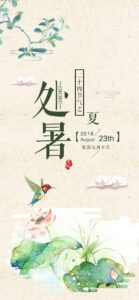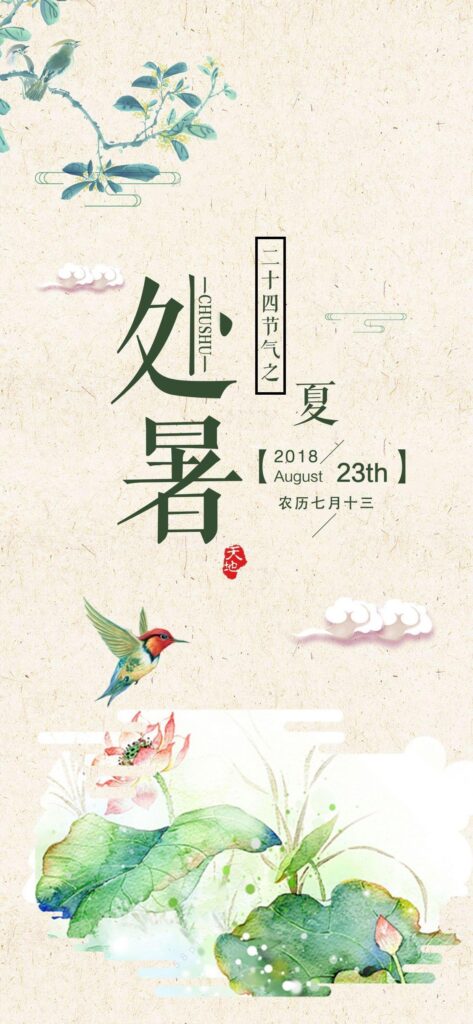When the Start of Autumn arrives, the refreshing autumn wind often seems delayed. Around August 23rd of the Gregorian calendar, we welcome the fourteenth solar term—the Start of Autumn. This marker is not only a vivid sign in the rhythm of seasons but also a reflection of how delicately the ancients perceived time.
The term “Chu Shu” first appeared in Collected Explanations of the Seventy-Two Solar Terms: “Chu means to stop. The summer heat has come to an end here.” The character “chu” implies conclusion or concealment, pointing to the fading of summer’s blazing heat. Yet the change is never sudden. A folk saying notes, “The weather is still hot during the Start of Autumn, just like a tiger in autumn.” Short bursts of heat often return, and though the fierceness of summer weakens, it lingers as a reminder that seasonal transitions unfold gradually.
Climatic features at this time sketch the journey from summer to autumn. The sun’s rays move southward, reducing the Northern Hemisphere’s solar radiation. Day and night grow apart in temperature, often by more than ten degrees. Days still hold warmth, but evenings bring rising coolness, replacing midsummer’s sticky heaviness with balance. Northern regions are the first to embrace comfort, while the south still enjoys lingering warmth, like a faint echo of spring. Rainfall decreases, humidity drops, and the first hints of “autumn dryness” appear.
The ancients described the Start of Autumn in three poetic phases. In the first, “eagles offer sacrifices to birds.” Eagles hunt more actively, displaying prey as if in a solemn ritual, storing strength for winter. In the second, “heaven and earth begin to wither.” Leaves turn gold, grass fades, and the world grows tinged with decline. In the third, “crops ripen.” Millet, rice, and sorghum bow heavy with grain, announcing the harvest season. Together these phases portray nature’s cycle of vigor, fading, and renewal.
Folk traditions also add vitality to this solar term. In many places, people eat duck, believing “a duck at the Start of Autumn keeps illness away.” Duck, cooling in nature, nourishes while relieving dryness, making it ideal for this season. Roasted, stewed, or in soup, it appears on countless tables. Along the coast, fishermen launch the “Fishing Opening Festival,” when thousands of boats set sail together, harbors alive with anticipation of abundant catches. With clearer skies and gentler air, people also take to the hills, admiring early autumn scenery while exercising in step with seasonal health practices.
Thus, the Start of Autumn is more than a date; it is a threshold where two worlds meet. It closes summer’s fiery chapter and opens autumn’s calm verses. Evening breezes soften the land, fields swell with ripening grain, and every gust carries both farewell and welcome—farewell to restless heat, welcome to serene coolness.
This solar term reminds us of time’s steady flow. Yet within change lies beauty and promise. We await autumn’s harvest, its abundance and gifts, and the enduring wisdom it carries: that every ending is also a beginning, and in every season’s turning there is both memory and renewal.
Meanwhile, CAMEI is also looking forward to every “harvest” after the beginning of autumn.


